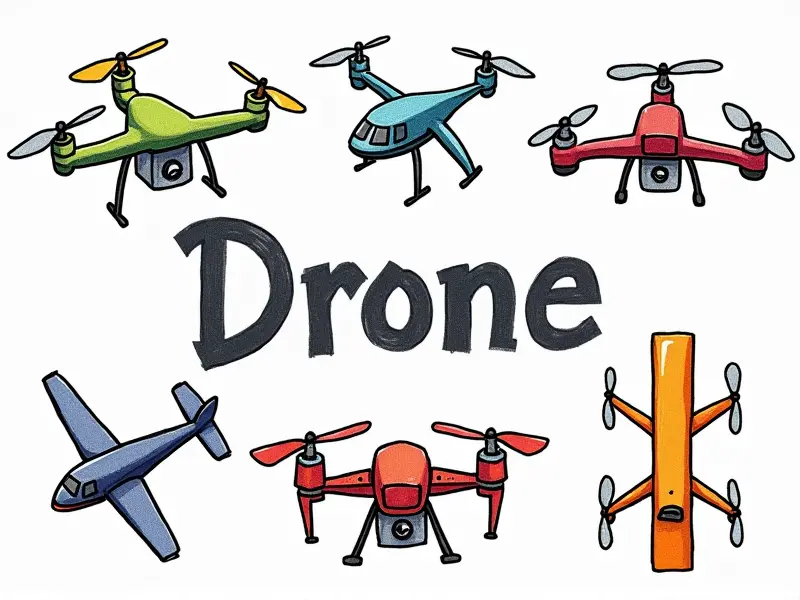How to make a drone more stable?

How to Make a Drone More Stable
Drone enthusiasts and professionals alike are always on the lookout for ways to enhance their aerial devices' performance. One of the most critical aspects of drone operation is stability. A stable drone ensures smoother video footage, better maneuverability, and overall safer flights. This article delves into various techniques and tips that can help you achieve maximum stability in your drone flying.
Top Tips for Drone Stability Improvement
Improving the stability of your drone involves a combination of hardware adjustments and flight technique enhancements. Here are some top tips to get started:
- Balancing Your Drone: Ensure that all components, including propellers and batteries, are evenly distributed.
- Tuning Propeller Speeds: Adjust the speed of each motor for optimal performance.
- Using High-Quality Components: Invest in premium parts to reduce vibrations and improve overall stability.
Mastering Drone Stability Techniques
Mastery over drone stability techniques requires practice and patience. Here are some essential steps to follow:
- Understanding Flight Dynamics: Learn how different factors like wind, altitude, and payload affect your drone's performance.
- Calibrating Sensors: Regularly calibrate your drone’s sensors for accurate readings.
- Practicing Manual Control: Gain proficiency in manual flight modes to better handle unexpected situations.
Ultimate Guide to Stable Drones
The ultimate guide to stable drones covers everything from initial setup to advanced tuning. Here’s a comprehensive overview:
- Initial Setup: Properly assemble your drone and ensure all connections are secure.
- Tuning Parameters: Adjust settings such as PID values, motor power curves, and gyro sensitivity.
- Maintenance Routine: Regular maintenance checks can prevent issues before they arise.
Secrets to Perfect Drone Balance
Achieving perfect drone balance is crucial for stability. Here are some secrets to help you get there:
- Weighing Components: Use a precise scale to ensure all parts are balanced.
- Adjusting Center of Gravity (CG): Fine-tune the CG by moving components slightly.
- Testing in Different Conditions: Test your drone under various weather and altitude conditions.
Enhance Drone Flight Stability Easily
Simplifying stability enhancement can make it more accessible for beginners. Here are some easy steps to follow:
- Use Stable Propellers: Opt for propellers designed specifically for stable flight.
- Install Anti-Vibration Mounts: These mounts reduce vibrations and improve overall stability.
- Upgrade to a Better Flight Controller: A high-quality controller can significantly enhance performance.
Simple Fixes for Unstable Drones
If your drone is experiencing instability, there are several quick fixes you can try:
- Check Battery Levels: Low battery levels can cause erratic behavior. Ensure batteries are fully charged.
- Inspect Propellers: Damaged or unbalanced propellers can lead to instability. Replace them if necessary.
- Tighten Screws and Connections: Loose parts can affect stability. Make sure everything is securely fastened.
Achieving Maximum Drone Stability
To achieve maximum drone stability, consider these advanced techniques:
- Implementing Advanced PID Tuning: Fine-tune your drone’s control parameters for optimal performance.
- Using GPS and Compass Calibration: Ensure accurate positioning by calibrating these sensors regularly.
- Incorporating Wind Compensation Algorithms: These algorithms help maintain stability in windy conditions.
Drone Stability: Tips and Tricks
Here are some additional tips and tricks to improve drone stability:
- Leverage Firmware Updates: Keep your drone’s firmware up-to-date for the latest features and bug fixes.
- Practice in Calm Conditions: Start with stable weather conditions before moving on to more challenging environments.
- Utilize Flight Simulation Software: Practice flight scenarios virtually to enhance your skills without risking damage.
Achieving Perfect Drone Balance and Control
To achieve perfect balance and control, focus on these key areas:
- Optimize Propeller Pitch: Adjust the pitch of your propellers for better lift and stability.
- Calibrate Gyroscopes: Ensure accurate readings from gyroscopes to maintain steady flight.
- Test in Real-World Scenarios: Apply what you’ve learned in various real-world conditions to refine your techniques.
Maximize Drone Stability with These Hacks
Here are some hacks that can help maximize drone stability:
- Install Dampening Springs: Reduce vibrations and improve overall flight quality.
- Use Weighted Propeller Guards: Balance your drone by adding weight to propeller guards.
- Implement Custom Firmware: Customize firmware settings for tailored stability enhancements.
Quick Tips for More Stable Drone Flying
To ensure more stable drone flying, follow these quick tips:
- Monitor Battery Temperature: High temperatures can affect performance. Keep batteries cool and within optimal range.
- Adjust Motor Speeds: Fine-tune motor speeds for better control and stability.
- Practice Hovering Techniques: Master hovering to improve overall flight stability.
Conclusion
Making your drone more stable is a continuous process that involves both hardware adjustments and skill development. By following the tips, techniques, and hacks outlined in this guide, you can significantly enhance your drone’s performance and ensure smoother, safer flights. Whether you are a beginner or an experienced pilot, these strategies will help you achieve perfect balance and control.

